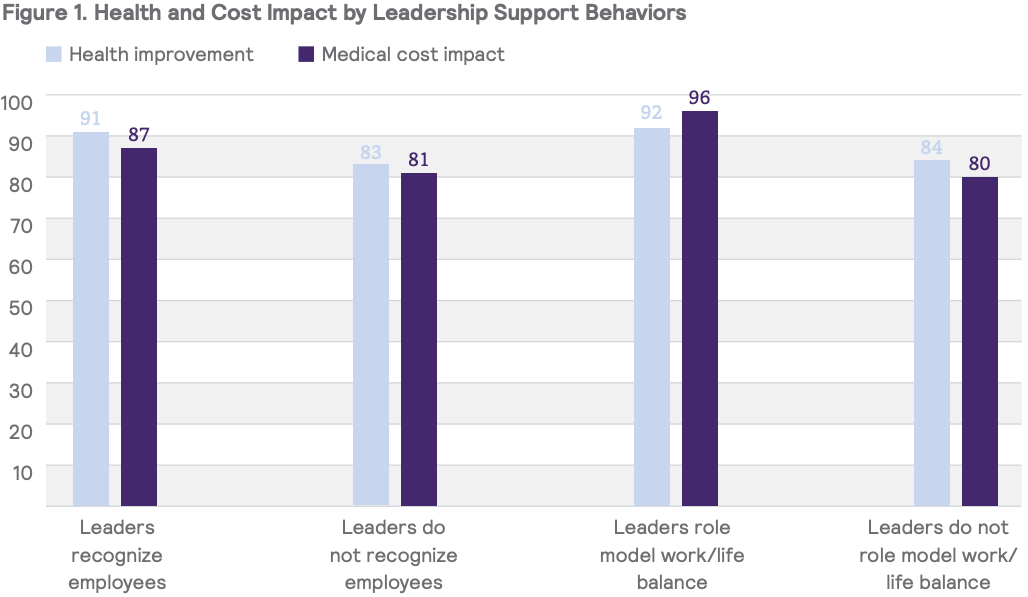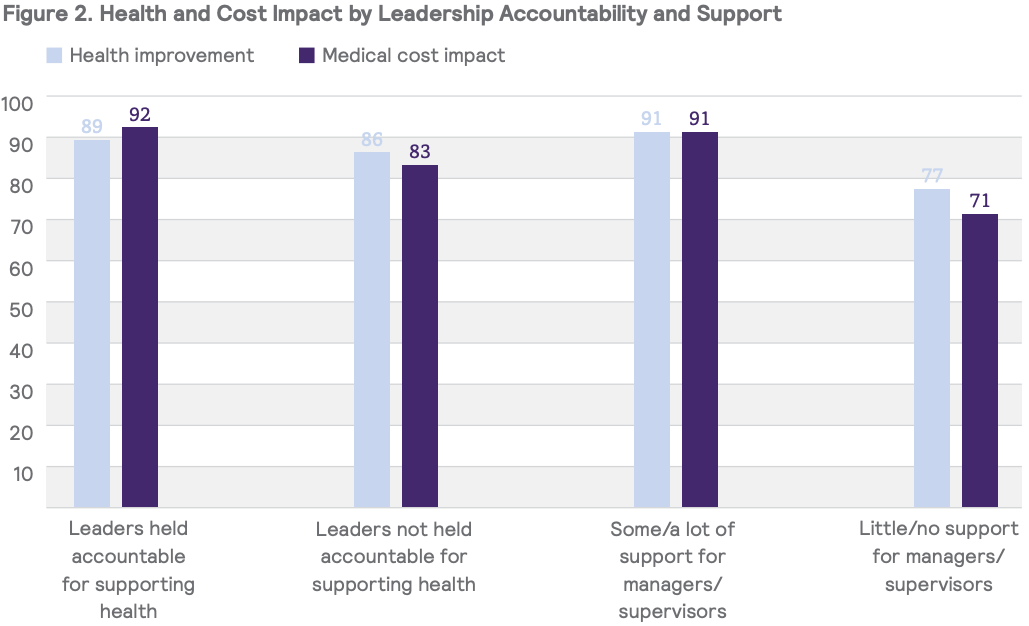For administrators of and participants in employee wellness programs, leadership support has long been believed to be a critical and low-cost driver of engagement. Although this concept is widely known and understood, it is nice to have some data to back it up. A new report from the Health Enhancement Research Organization (HERO) and Mercer does just that.
To measure the impact of leadership support, the analysis examined the association between the different types of leadership support and outcomes from “top-scoring organizations,” which are organizations that had employee wellness programs that scored in the top 25% in terms of their comprehensiveness. The types of leadership support include public recognition and role modeling.
Leaders of top-scoring organizations that publicly recognized employees for healthy actions and outcomes were more likely to report employee health improvements (91% vs. 83%) and medical cost improvements (87% vs. 81%) relative to organizations that did not have public recognition from leadership. Leaders of top-scoring organizations that served as role models for prioritizing health and work/life balance were more likely to report employee health improvements (92% vs. 84%) and medical cost improvements (96% vs. 80%) relative to organizations where leadership did not serve as good role models.

The study also reviewed the impact of leadership accountability and support for managers. Leadership accountability entails holding leaders and front-line managers responsible for supporting employee health, and support for managers entails providing some or a lot of support for managers to improve employee health. As exhibited below, leadership accountability and support for managers resulted in better health and medical cost improvements.

The key takeaway for employee wellness program administrators is that securing funding for a program is only part of the goal when selling leadership. They should also focus on having leadership truly embrace the program by having them commit to publicly recognizing participants of the program, serving as role models by prioritizing health, holding themselves and managers accountable, and making sure managers have the resources they need to improve employee health. Ideally, leadership will do all of these things and more (e.g., helping promote the program), but any leadership involvement can deliver tangible results in their program.
There were also other interesting findings in the report. The report also found that there is a higher prevalence of reported health improvements in organizations that offer targeted lifestyle management services than in those that do not (29% vs. 9%). The results were similar when looking at medical cost improvements (36% vs. 10%). Interestingly, when employers offer financial incentives, 72% of employees report satisfaction with well-being initiatives, compared to 66% when employers do not offer incentives. Based on the percentage of wellness programs with incentives, this finding is likely to counter what many employers would expect.












